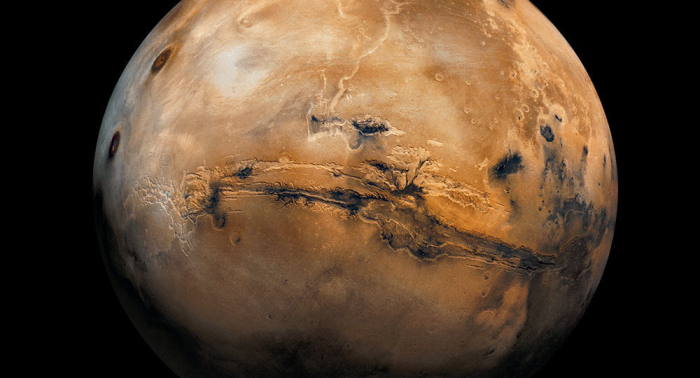Mars is estimated to have lost at least 80% of its original water, as ultraviolet radiation from the Sun split water molecules in the upper atmosphere into hydrogen and hydroxyl radicals and the hydrogen gas irrevocably escaped.
But the mystery lies in how the water made it all the way there in the first place. Like Earth’s tropopause, Mars has a middle atmospheric layer that should restrain rising gas, causing it to turn to ice and fall back to the planet surface.
Scientists have now identified a water-cycle that might offer clues as to how Mars lost so much water and why Earth manages to hang onto its reserves.
Every two Earth years, it’s summertime on the southern hemisphere of Mars and in that place and time, water vapor efficiently rises from the lower to the upper atmosphere. From there, winds carry most of the rare gas to the North Pole, where it sinks once again, but part of it decays off into space.
Computer simulations by scientists from the Moscow Institute of Physics and Technology and the Max Planck Institute for Solar System Research (MPS) in Germany have found a previously unknown mechanism that punches a hole in that protective layer.
The Martian orbit of the Sun is much more elliptical than ours and when it’s summer in the southern hemisphere, the planet is closest to its star. That means it’s much warmer than a northern hemisphere summer.
“When it is summer in the southern hemisphere, at certain times of day water vapor can rise locally with warmer air masses and reach the upper atmosphere,” says Dr. Paul Hartogh from the Moscow Institute of Physics and Technology (MPS) in a statement.
The huge dust storms that afflict Mars every few years exacerbate the problem. Since dust particles can absorb sunlight and so heat up, they take temperatures in the entire atmosphere up by as much as 30 degrees.
“Our model shows with unprecedented accuracy how dust in the atmosphere affects the microphysical processes involved in the transformation of ice into water vapor,” explains Dmitry Shaposhnikov of MPS, first author of the new study.
Forbes
More about: Mars
















































